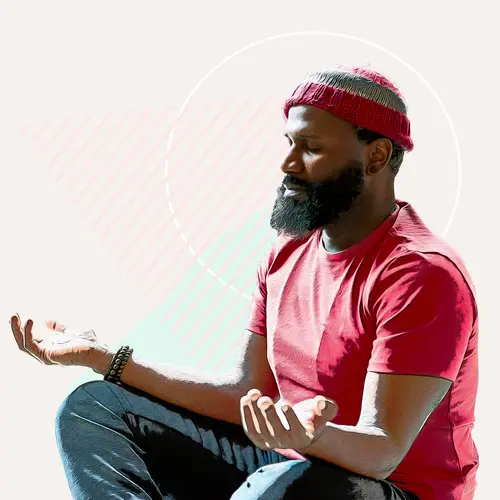Jan. 8, 2001 (St. Louis) -- Patients take off their shoes before beginning therapy with Caroline Heckman. They close their eyes and listen to their bodies. Some will skip or stretch, others will stand cross-armed or pound the floor.
Heckman watches. And when the session is complete, she discusses what she observed.
"Feelings come up -- grief, anger, loss, shame," says Heckman, MA Ed., a registered dance therapist (ADTR) in private practice in St. Louis. "When you start to move the body ... the feelings get activated, too."
For centuries, dance has been recognized as a means of expressing oneself, celebrating life, or performing ritualistic healing. Now, dance is increasingly accepted as a way to help work through one's problems. Whether someone is suffering from sexual abuse or bulimia, breast cancer or depression, advocates say dance therapy can help people gain insight into their behavior, improve their self-esteem, and provide options for coping.
"Movement is a healing force," says Vivien Marcow Speiser, PhD, ADTR, a dance therapy professor and chairwoman of the Institute for Body, Mind and Spirituality at Lesley University in Cambridge, Mass. "Everybody knows that when you move, you feel better. That's why so many people exercise and take care of their bodies."
Dance therapy officially surfaced in the wards of psychiatric hospitals during World War II, when dance instructor Marian Chace used movement to treat veterans in Washington, D.C. The practice was labeled as a distinct profession in the 1960s and was recognized by President Carter's Commission on Mental Health a decade later. Dance therapy has more recently been the focus of studies receiving federal funding as researchers aim to document its effectiveness. Furthermore, the first U.S. doctorate program in the field is currently being launched.
"As we move into the new millennium, we need to increase the strategies that have evolved for keeping people healthy," says Marcow Speiser. "Dance therapy definitely has its place."
Because dance is a basic communication skill, it is a valuable means of therapy, according to the American Dance Therapy Association. It is used to improve emotional, developmental, mental, social, and physical well-being. Therapists can work with groups or on a one-on-one basis. Dance therapy is currently offered in day care centers, prisons, mental health facilities, and hospitals, and is based on the belief that the body, mind, and spirit are interconnected.
"The whole person is involved in the treatment instead of just the words or the language or the thoughts," says Sally L. Totenbier, ADTR, chairwoman of the association. "We have the language and words and thoughts because they occur along with the movement, but we also have the physical movement with the memories and associations that come from being in movement. You have more layers that are occurring."
About 1,200 dance therapists practice nationwide, according to the association. Many patients are referred to dance specialists through their primary therapists. Even those without any rhythm or dance experience may benefit. In particular, patients who are rigid and have a difficult time vocalizing their feelings can learn to express themselves.
"Dance therapy is not dance technique," says Heckman, who also teaches a dance therapy course at Washington University. "You don't have to be a dancer. It's about movement, and movement can be anything."
Much of the public focus on dance therapy has been in connection with seniors. A study conducted by the dance therapy association in 1996, funded by the U.S. Administration on Aging, concluded that dance/movement therapy improved the functional abilities of seniors with neurological damage due to stroke or traumatic brain injury. The participants, who averaged 74 years of age, reported improvements in mood, social interaction, physical function, and energy levels.
"I'd be hard-pressed to find someone who could not benefit from dance therapy because of their personality or physical abilities," says Totenbier. "With movement of the eyes or small gestures, we can work with those and find a way to help the person use those in an expressive or meaningful way."
Without any training, Sharon Daugherty, MS, found that dance therapy worked for her. As a survivor of incest, she founded Innermotion, a dance theater group made up of sexual abuse survivors who tell a story of healing through dance. The goal of the Ft. Lauderdale-based troupe was to inspire other abuse victims with a message of hope. The result was a sense of awakening for all involved.
"This has empowered the dancers so far beyond what their traditional therapy did," says Daugherty. "Innermotion gives you the opportunity to take all of your strengths and feel safe enough to come up against any more obstacles and to heal them."
Most people involved in dance therapy are female, as are the therapists themselves, but it can be of benefit to young and old, male and female, Totenbier says. It can be the only means of therapy for a patient, or used in conjunction with traditional therapy when words just aren't enough.
"It's one thing to talk about your rage and say, "The next time I get mad, I am going to try this,'" says Totenbier, who has a private practice in Houston. "But when you are doing it with movement, the person is able to put their body in gear, and experience what they do when they are angry, and start to try different interventions. It adds another level, and for many people that is important."
